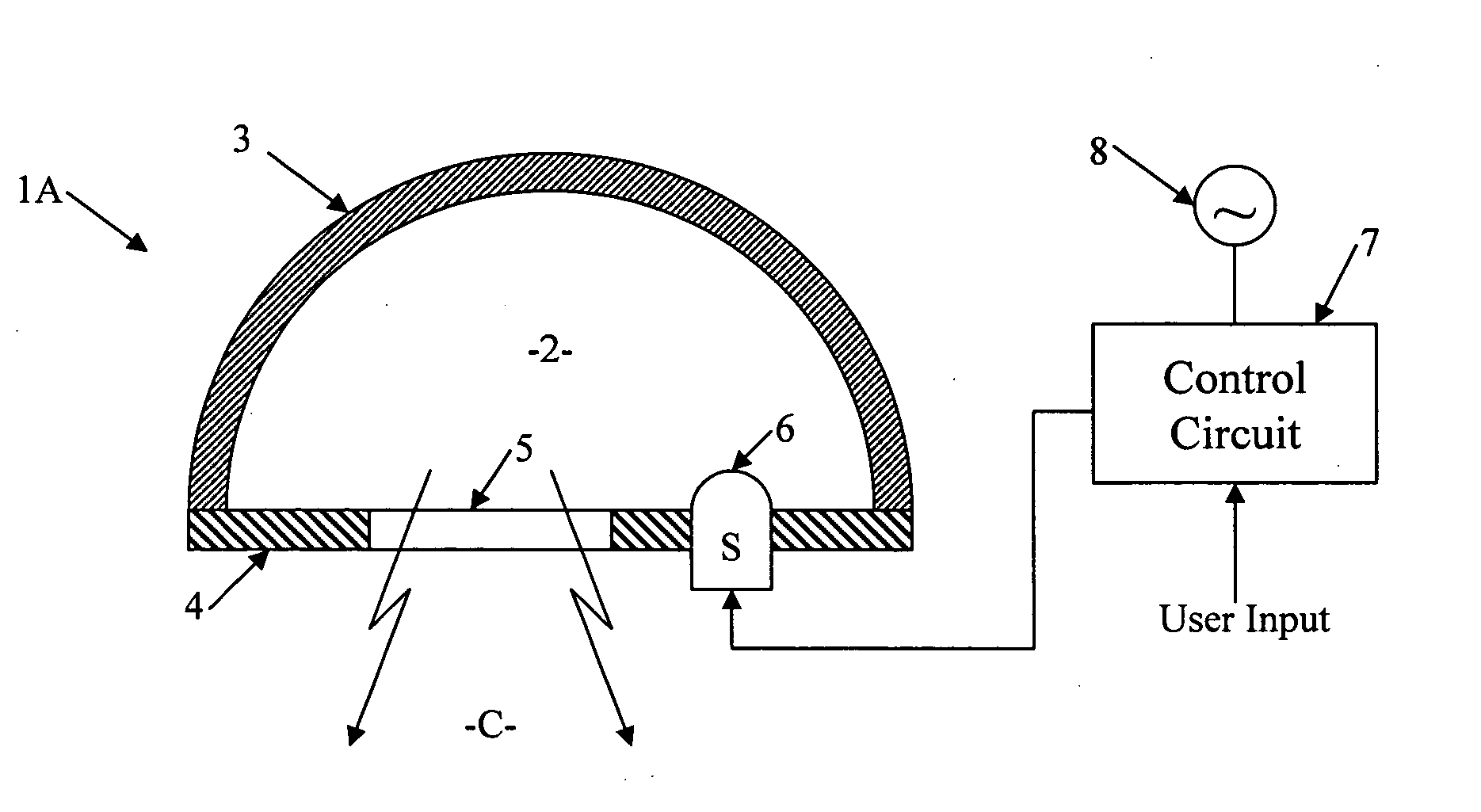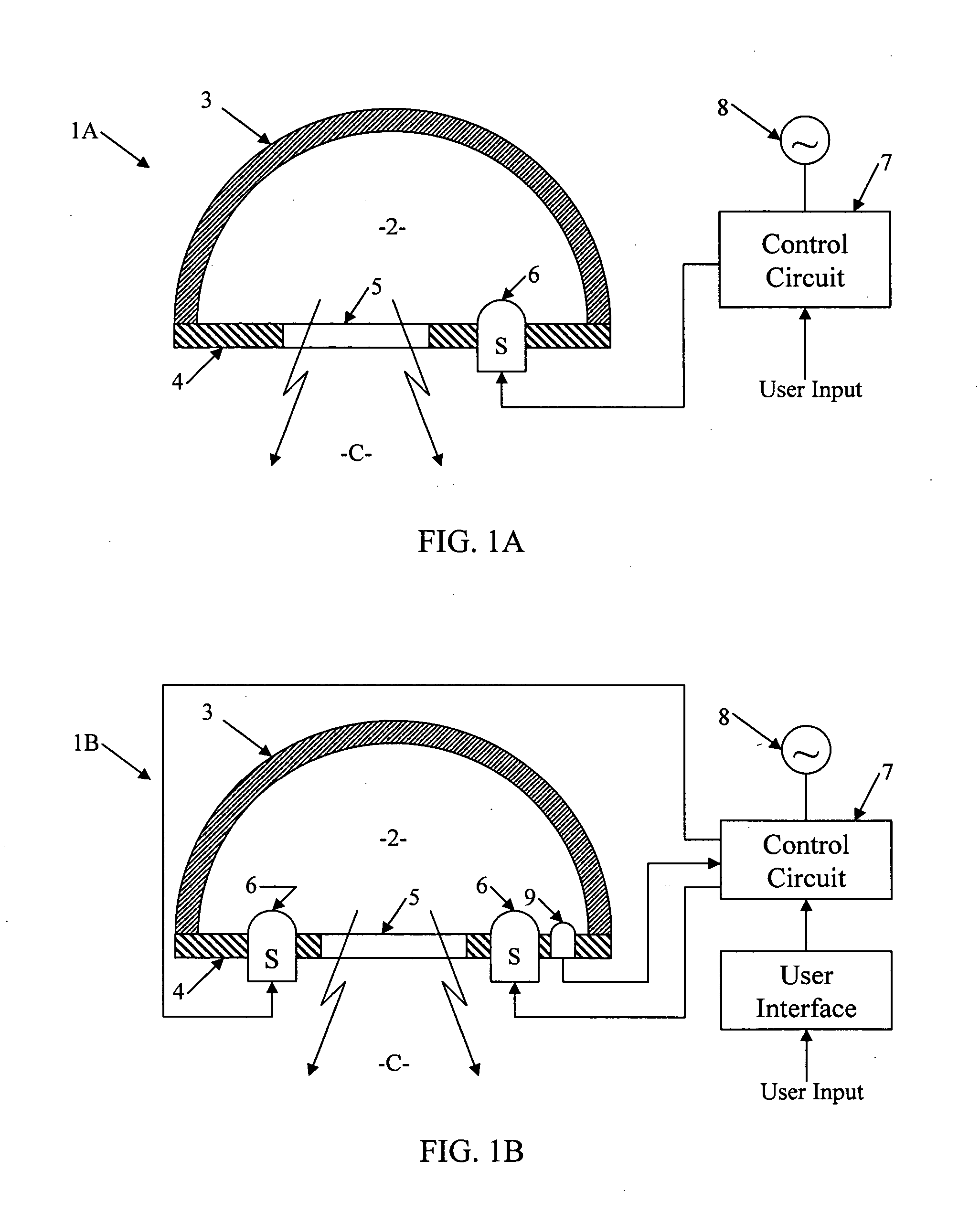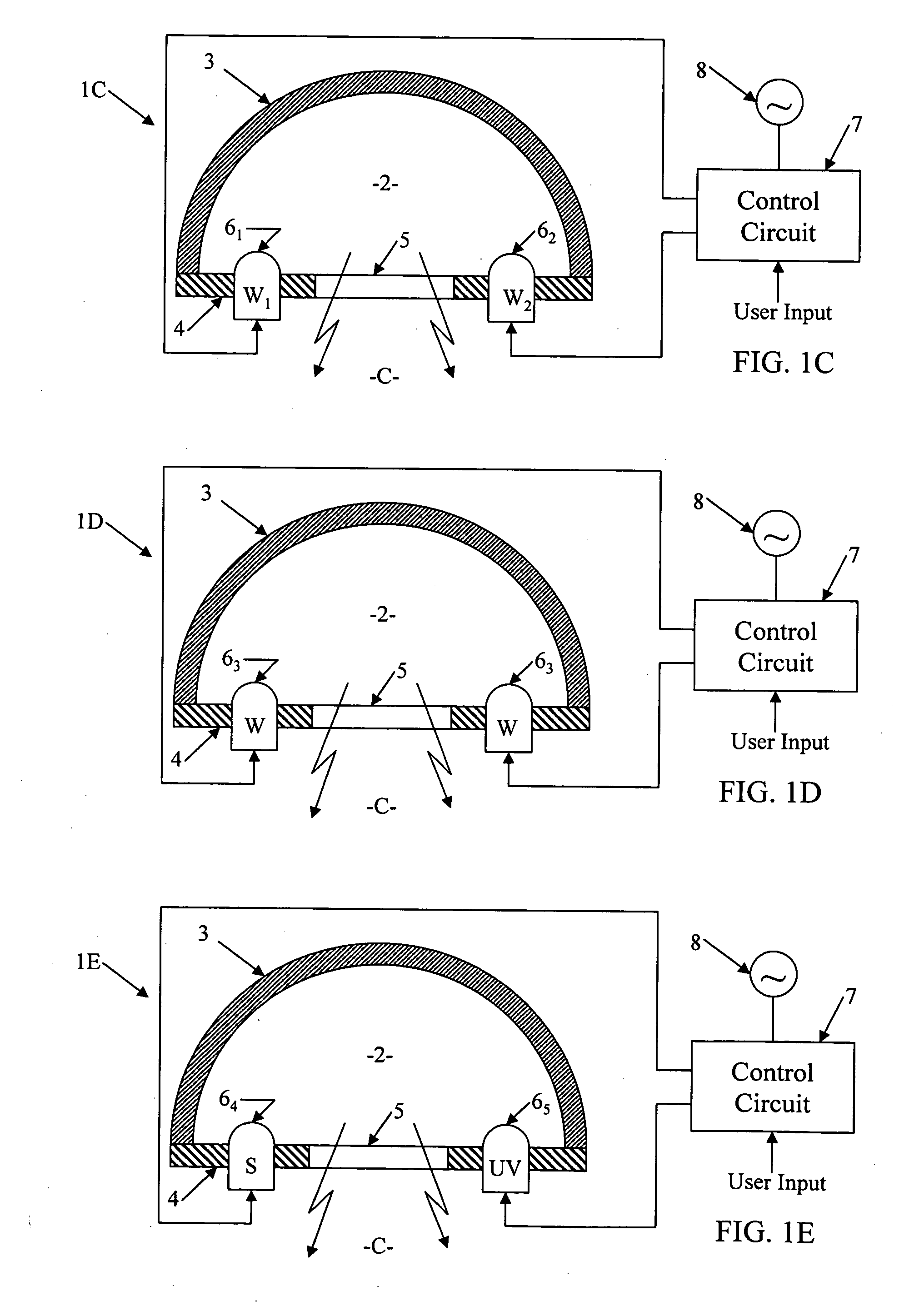Conversion of solid state source output to virtual source
a technology of virtual source and solid state source, which is applied in the direction of optical radiation measurement, light control, light guide details, etc., can solve the problems of insufficient light intensity, unfavorable lighting effect, and inability to provide such a small output area
- Summary
- Abstract
- Description
- Claims
- Application Information
AI Technical Summary
Benefits of technology
Problems solved by technology
Method used
Image
Examples
Embodiment Construction
[0047] In the following detailed description, numerous specific details are set forth by way of examples in order to provide a thorough understanding of the relevant teachings. However, it should be apparent to those skilled in the art that the present teachings may be practiced without such details. In other instances, well known methods, procedures, components, and circuitry have been described at a relatively high-level, without detail, in order to avoid unnecessarily obscuring aspects of the present concepts. Reference now is made in detail to the examples illustrated in the accompanying drawings and discussed below.
[0048] The techniques disclosed herein convert one or more solid state light sources of relatively small areas (“point sources”) into a virtual source of a larger area. Although other technologies for diffuse processing of light may be used to form the virtual source output, the examples use optical cavity processing. The light output forms a virtual output in that ...
PUM
| Property | Measurement | Unit |
|---|---|---|
| reflectivity | aaaaa | aaaaa |
| area | aaaaa | aaaaa |
| reflectivity | aaaaa | aaaaa |
Abstract
Description
Claims
Application Information
 Login to View More
Login to View More - R&D
- Intellectual Property
- Life Sciences
- Materials
- Tech Scout
- Unparalleled Data Quality
- Higher Quality Content
- 60% Fewer Hallucinations
Browse by: Latest US Patents, China's latest patents, Technical Efficacy Thesaurus, Application Domain, Technology Topic, Popular Technical Reports.
© 2025 PatSnap. All rights reserved.Legal|Privacy policy|Modern Slavery Act Transparency Statement|Sitemap|About US| Contact US: help@patsnap.com



